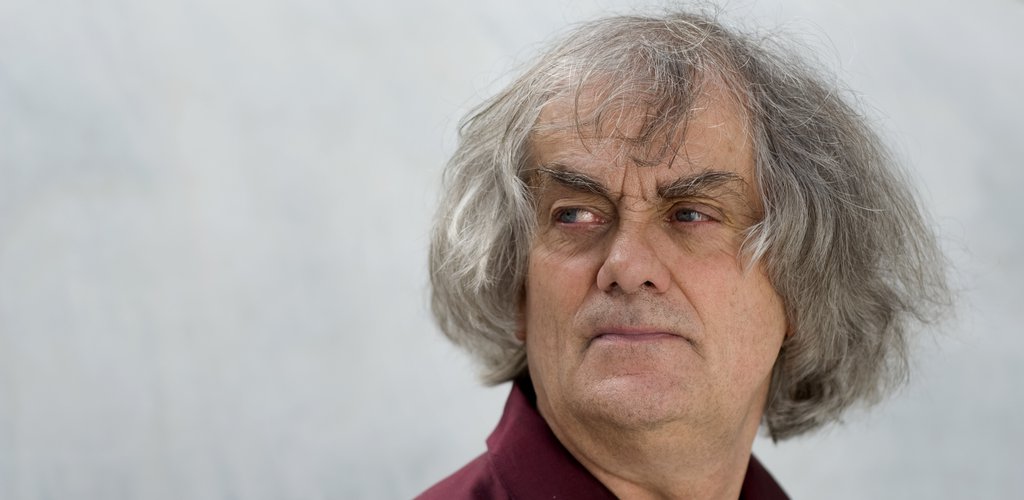A specialist profile in early music means Sigiswald Kuijken rarely performs with Hungarian musicians, but he knows and respects our music culture nonetheless. His youngest daughter’s husband is a Hungarian violinist – a member of the Orchestre de Chambre de Lausanne – and through him Kuijken has got to know something of the Hungarian mentality “from within”. He speaks highly of his current hosts, Iván Fischer and the Budapest Festival Orchestra, but is frank when he says that the orchestra making it into various international Top 10 lists means nothing to him per se, as he considers the competitive spirit to be naturally foreign to music culture.
In giving his reasons behind the choice of programmes for the Budapest concerts, he says that the Festival Orchestra requested he come up with two markedly different programmes for the November 2015 and January 2016 concerts; so it was almost a given that the first programme would be a selection of French Baroque, with German and Italian Baroque to follow in January. This evening’s, and tomorrow’s, concert will feature compositions by Lully, Rebel, Clérambault and Rameau.
“The French Baroque style is so characteristic and rich, but the only way to get to know it intimately is by playing on period instruments and by keeping strictly to the performance requirements of the time. Those include lowering the contemporary international standard of 440 Hz to a natural A of 392 Hertz.” The concert will also feature the Canadian soprano Stefanie True, and Sigrid ‘t Hooft, an internationally-renowned expert on Baroque gesture who will be directing the interpretation of Clérambault’s cantata La Muse de l’Opéra.
Towards the end of the 1970s, Kuijken’s ensemble, La Petite Bande, became pioneers in the historic performance style of early music. He thinks that, owing to musicological research, the playing of early music has improved dramatically over the past decades. On the flip side, however, he says more and more people are striving simply to comply with business standards and poorly interpreted managerial expectations.
“Be it through concerts, festivals or recordings, I am hearing ever more productions that serve only to astonish; and although the musicians partaking are excellent, they are clearly focusing on guaranteeing the performance’s success under all circumstances. This results in the musicians putting themselves in the spotlight, and not the composer or the composition. Another fashionable trend is to combine a Baroque performance with modern elements, purely to look innovative or surprise the audience. I think such musicians do not respect music, and also lack self-confidence. I don’t believe in artificial devices, in externalities – I think music quality always stems from within. It may be that the La Petite Bande is not such a fashionable ensemble these days, but I can say with certainty that I will never partake in trends with which I cannot fully identify.”
Sigiswald Kuijken shows a similar honesty when speaking about the serious financial crisis his orchestra has been suffering since 2012, when the Flemish government suddenly withdrew its support. The only way to make ends meet was for Kuijken to write the book ‘Abide with us, Bach!’, simultaneously published in English, German, Dutch, French, Spanish, Italian and Japanese, and unavailable at bookstores or anywhere online, music fans could only purchase it directly from La Petite Bande.
It was the income from the book (and accompanying CD) as well as donations that saved the ensemble, but they have had to cut back their activities significantly. For example, besides a few instrumental and cantata concerts they only have one major project lined up for 2016, a semi-staged performance of Mozart’s The Abduction from the Seraglio. Kuijken’s daughter, Marie, will instruct the performers on the prose parts and acting styles to give a precise reflection of the late 18th century. Through this, “rather than senseless modernisation, we are going to return to the work itself and purge the music of 225 years of pretence.” So says Kuijken about the focus of a performance planned for next October.
Lastly we asked Sigiswald Kuijken about the old-new instrument which he rediscovered, after having been completely forgotten for 250 years, and which has, over the past decade, served to enrich not only his personal career but also given new meaning to several stringed Baroque masterpieces. This instrument is the violoncello da spalla, the shoulder cello, which – as opposed to a regular cello – is not played in a vertical position on the ground but is rather braced against the shoulder like a violin or viola; its range, however, is identical to a cello’s.
“In 2004 I was at the Musical Instrument Museum in Brussels when I saw a very rare, deep viola, called viola pomposa,” says Kuijken. “Without making any external request or having a specific goal in mind, I had the idea to have a copy made for myself. When I first handled it I was amazed by the beauty of its sound. I started researching its history, and came to the realisation that this was the very instrument described by the great German 18th century music theorist Mattheson as the violoncello da spalla, and which plays a pivotal role in Bach’s string compositions. When I first played the Bach Cello Suites on this instrument, it was like returning home after a long, arduous journey. I was filled with peace and harmony.”
This is how Sigiswald Kuijken became the only musician in the world who can play both Baroque violin and cello pieces to an equally-high standard.
THIS INTERVIEW WAS ORIGINALLY PUBLISHED IN NÉPSZAVA (IN HUNGARIAN).


